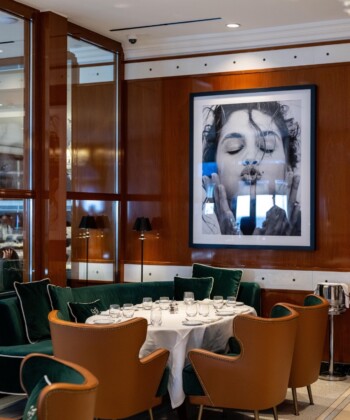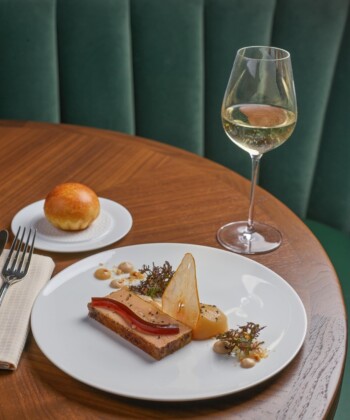
The New Charcuterie Cookbook
Jamie Bissonnette’s not your average chef, so it’s not too surprising that his first cookbook, The Charcuterie Cookbook: Exceptional Cured Meats to Make and Serve at Home, isn’t so run of the mill either.
What Bissonnette, the peripatetic chef at Toro (New York and Boston) and Coppa (Boston), is offering readers isn’t the chance to recreate yawn-inducing restaurant dishes—molten chocolate cake at home! —but the opportunity to churn out the sort of double-take-inducing fare that’s made his restaurants so exceedingly popular.
In a chat with DuJour, Bissonette talks meat, mindfulness and the one thing that really grosses him out.

Vietnamese Bologna
You’re willing to take on the pieces that might creep out just about anybody else?
I like using the idea of using all the pieces of an animal. We would get whole animals at the restaurant every once in a while, like whole chickens or whole rabbits, and no one would ever touch anything except the loins. I’d say what about the hearts and the kidneys. I figured I’d start to get creative, so I started cooking them.
Did you just wake up one day and decide to dive into offal? How did you end up cooking such… unique ingredients?
I didn’t grow up in the south, so I’m not a barbecue expert. Growing up in Hartford, Conn., my favorite barbecue was at the mall when someone was handing out chicken on a cheese stick, and the sauce is made of corn syrup, mustard, and a bunch of shit that’s probably not very good for you. I asked myself, “How can I mimic that and make it work?” I started making it with kidneys—and it worked. So, I decided to put it into the book.
So is it more fun for you to work with things that don’t taste good by themselves?
I guess so. I love cooking everything. I mean, I don’t look at it as cooking offal.
You used to be vegan. Did you ever imagine yourself writing a book about charcuterie?
I haven’t been vegan since I was 23. I’m 37, so it didn’t seem to be a factor.

Duck prosciutto
How did you get into meat?
When I got out of culinary school, the chef I was working for said to me, “You’re a good cook, and you’re going to be a great cook one day, but in order to be a chef, you need to eat what you make.”
You say in the introduction of your book that people are ready for your recipes because they’ve become more adventurous. Why do you think that’s the case?
So many people come up to me at my restaurant and they’re like, yeah, I’m a home cook, I buy pork’s neck and I try to make Ramon broth. I hear things like that on a regular basis so I know there are people out there who want to cook more than just the simple things that are in other books.
When you’re manipulating the severed heard of a pig do you ever get squeamish?
Me?
Yeah, you.
No! The only time I’ve ever been squeamish butchering an animal was when one of my servers threw up and the sounds and sights of her vomit made me vomit.
MORE:
A Forageable Feast: Inside René Redzepi’s Cookbook
Recipes and Stories About What Parisians Really Eat
Corby Kummer Gives Tasting Menus a Second Chance









































